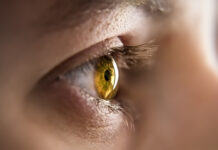Evolutionary biologists assume that life arose in the earth’s oceans about 3.5 billion years ago. About a billion years later, the conditions for life changed decisively: sunlight was used for the first time by single-cell organisms for photosynthesis. That would be approximately one trillion sunrises to which life on earth has been exposed to. The urge to perceive sunlight was followed over four hundred million years ago by so-called “euglena” in the oceans. These animals are a type of algae that can perceive light, with a mechanism surprisingly similar to the structure of the rods of the human eye.
The first evidence for the use of handcrafted light sources comes from archaeological findings from around 500,000 years ago. Fire was used as a source of light at night, but life and work still depended on daylight.
A recent turning point was the invention of electric light at the end of the 19th century, along with changing work conditions. With industrialization and digitalization, people — except for workers such as fishermen and gardeners — spend more and more time indoors with electric light. With the industrial revolution, a new epoch dawned: we might call it an Art Nouveau. Indeed, the striving back to nature was exemplified by abstract replication of plants in architecture (see, for example, Gaudí’s creations) and design. Considering our experience with around one hundred years of electric lighting, people have been exposed to this artificial creation five thousand times shorter than to the light at night from fire. With fluorescent lamps and LEDs, which are spectrally even more different from fire, the recency is even shorter. Our eyes have had four million times longer to optimize to daylight than to LEDs. It is therefore reasonable to assert, from the evolutionary standpoint, that human eyes and behavior are not yet optimized to electric light.

Proof for this optimization is provided by precise molecular clocks. The 24-hour day has given rise to biological clocks in many organisms — from algae to humans — that synchronize their physiological rhythms with the solar day. These clocks regulate almost half of all genes in the body. The trillions of cells in the body keep time so that their tasks can be performed in a temporally advantageous way. These biological clocks open our eyes in the morning and make us hungry for breakfast. When the gears of the cells get out of sync, we suffer from sleep disorders. If they are permanently out of sync, we suffer from psychiatric disorders, diabetes and cardiovascular diseases. Molecular clocks are integral to the functioning of individual cells, regulated by signals deep in the brain that react to light and darkness via the eye.
Today, it has become a critical to evaluate and recommend which light is used to illuminate our life indoors. The fact is a large proportion of people spend most of their time inside buildings and are deprived of natural daylight. Assuming that our visual apparatus is optimized for natural lighting conditions, intensive use of daylight brought indoors with innovative architectural design — or at least simulated with electric room lighting — should measurably improve our quality of life, health and performance. We need to demonstrate which properties of daylight should be replicated in electric room lighting. We still face many gaps of knowledge in daylight research, but both short- and long-term research agendas have been laid out clearly and call for priority attention. The Daylight Academy has issued an informational brochure for the public, Why Do We Need Daylight?
Oliver Stefani PhD dedicates himself to innovative lighting concepts tailored for people. He advises companies and institutions on good light. As a postdoctoral researcher, he researches the visual and non-visual effects of light on sleep, circadian rhythmicity, cognitive performance, well-being and pupil size at the Center for Chronobiology, University of Basel, Switzerland, with Prof. Christian Cajochen.






